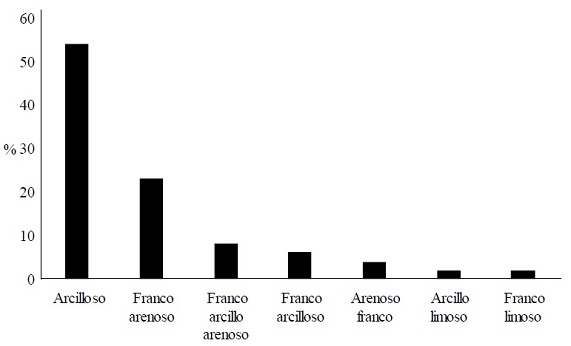Evaluación de la calidad de suelo de Tabasco, México, con métodos convencionales, espectroscopia de infrarrojo cercano y quimiometría
DOI:
https://doi.org/10.28940/terra.v41i0.1616Palabras clave:
degradación del suelo, granulometría, materia orgánica, modelo de clasificación PLS-DAResumen
Se realizó una investigación retrospectiva – prospectiva, para establecer un índice de calidad de los suelos (ICS) de la región de los Ríos (RR) en Tabasco, México y su modelación con la tecnología de infrarrojo cercano (NIR) y la quimiometría. Con la relación MO / (arcilla + limo) se estableció el ICS para evaluar los suelos Cambisoles de la RR. El porcentaje de MO y el ICS fueron comparados para definir el mejor calificador de la calidad de los suelos. Con base en el ICS, el 58% de los suelos de la RR presentan degradación, mientras que, solo el 14% de los suelos indican que presentan baja concentración de MO. Por lo que se concluye que el ICS es más sensible para cuantificar la degradación de los suelos cuando se comparó con la evaluación basada en la MO. Se recomienda un programa de manejo sostenible del suelo y prácticas edafológicas adaptadas a las condiciones locales, ambientales, sociales y económicas, para incrementar la MO y mejorar el ICS. Con el ICS se estableció un modelo de clasificación mediante espectroscopía de infrarrojo cercano y quimiometría. Se registraron los espectros de cada muestra de suelo y mediante interpretación quimiométrica se demostró que es posible establecer un modelo de análisis discriminante por mínimos cuadrados parciales (PLS-DA) para predecir el ICS. El modelo cumple con todos los calificadores estadísticos y predice correctamente el ICS en el 100% de los casos. Se concluye que la tecnología NIR genera información suficiente para predecir el ICS; con la ventaja de, eliminar el consumo de reactivos, no se generan residuos de laboratorio, se reduce el tiempo de análisis a minutos y no se destruye la muestra en estudio. Y solo se necesita secar, moler y tamizar las muestras de suelos para evaluar la calidad estructural de suelos.
Descargas
Publication Facts
Reviewer profiles N/D
Author statements
- Academic society
- Terra Latinoamericana

















